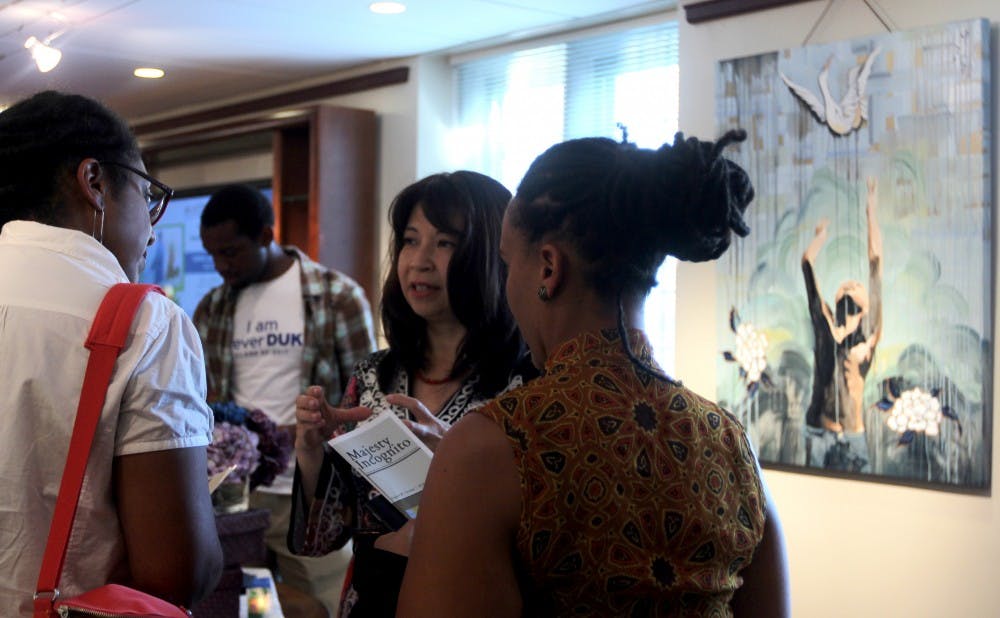"Majesty Incognito," an exhibit of paintings about African-American, Asian and Asian-American experiences, is on display at the Mary Lou Center for Black Culture and at the Center for Multicultural Affairs from now until Oct. 1st.
Created by Raleigh-based artist Yuko Taylor, the paintings combine archival images of photographs of African-Americans from the early 1900s with styles of traditional Japanese painting. In "Aria for Cotton III," for example, a young African-American woman cleans linens while flowering branches of East Asia bloom before them.
Rather than clashing or producing a sharp contrast, the two cultures feel seamlessly integrated in the paintings. It does not feel unnatural for an African-American fisherman to be at the center of this East Asian style painting or for Japanese flower blossoms to float behind two African-American women doing each other’s hair. At first glance, the paintings appear to come from one cultural tradition rather than two separate ones.
Originally from Tokyo, Taylor, moved to the American South in 1990. After coming to the U.S., she married an African-American man and started to learn about his family’s experience as African-Americans in the South. Taylor’s connection with her husband has played a role in her desire to connect southern African-American culture with her Japanese heritage in her artwork.
“I don’t know exactly why I did these pieces, but I know that someone had to do them," said Taylor. "I want the viewers to decide for themselves what these pieces are about.”
The title, "Majesty Incognito," highlights the mix of strength and humility that Taylor saw in the photographs that she used as sources. In the paintings, few of the figures look directly out at the viewers, but the figures do have a certain grace. Many figures are engaged in activities like fishing or plowing the soil that have a sense of ritual to them. Others interact with children or siblings and show a strong connection to family. The majestic nature of the figures is effortlessly clear.
The paintings also explore memory and the role of photographs in our construction of the past. To create a sense of memories slipping away into obscurity, Taylor allowed oil paints to drip down the paintings in a way beyond her control. Against the hazy dripping of the backgrounds stand the well-defined figures derived from archival photographs.
Works that include particularly fascinating interactions between Japanese and African-American cultures include "Callin’ Goddesses," in which the art of graffiti merges with two traditionally-dressed Japanese women, and "Help," in which an African-American child and Japanese women wash clothes side-by-side.
The exhibit is a collaboration between the Mary Lou and the CMA, with Taylor's works spanning both centers. "Majesty Incognito" opened this past Thursday with a reception at the Mary Lou with the artist.
“It’s great to see the different centers working together,” says senior Karina Santellano. “I’d like to see more collaboration between Duke’s different centers.”
The CMA and Mary Lou’s collaboration has brought this collection of elegant and culturally rich paintings to campus. Taylor's work reminds us that while memories fade, photographs can continue to stand out clearly in our imagination.
"Majesty Incognito" will be on display in the Mary Lou and the CMA from now until Oct. 1. For more information, go to http://studentaffairs.duke.edu/mlw/art-exhibits/ or visit one of the centers.
Get The Chronicle straight to your inbox
Signup for our weekly newsletter. Cancel at any time.

